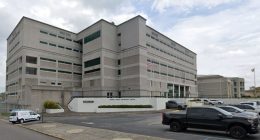
The good news is that Boeing was able to update the automated flight software on its troubled Starliner space capsule, allowing NASA to return it unmanned to Earth no sooner than Friday. The bad news — or at least the serious question — is whether Starliner will ever fly again.
NASA decided last week not to fly astronauts Butch Wilmore and Suni Williams home on board the same ship they flew to ISS on due to safety concerns about the service module’s malfunctioning thrusters. While an astronaut is sometimes scheduled in advance to return to Earth on board a different space capsule, this is the first time anything like Boeing’s snafu has happened.
On Friday, the New York Post reported that the discussion between NASA and Boeing “was heated.”
“Boeing was convinced that the Starliner was in good enough condition to bring the astronauts home, and NASA disagreed. Strongly disagreed,” a NASA source told the Post. “The thinking around here was that Boeing was being wildly irresponsible.”
I don’t know if “wildly irresponsible” is too strong or not, but I do know this: Ground tests conducted last month indicated that there was no way to predict exactly how the troublesome thrusters would perform. They would probably be fine — probably — but no one could say whether or not the risk was inside or outside of NASA’s strict tolerances. Without that magic number, NASA could not in good conscience put Butch and Suni back on board.
When that NASA source also told the Post, “Boeing wasn’t happy,” that was certainly an understatement.
So, what’s next for Starliner?
“I am not sure the decision will ultimately be NASA’s. Boeing is going to have to foot much of this bill, as they have been,” Lori Garver, a former NASA deputy administrator who was a key architect of NASA’s Commercial Crew Program, told Reuters last week. The company is already $1.6 billion in the red on Starliner.
Boeing is contracted to send three crewed Starliner missions to the International Space Station over the next six years, with the possibility of up to three more.
Under the original terms of the Commerical Crew program, SpaceX and Boeing were supposed to split the 12 remaining crewed missions even-steven. However, since Boeing has yet to successfully complete a manned flight test, which company gets the remaining three flights that were supposed to be allotted to Boeing remains in doubt.
Complicating things further, it seems impossible that NASA will not certify Starliner for any manned missions until it completes a manned flight test — at the company’s expense under the fixed-price contract. That’s going to cost Boeing at least another $100 million, plus however many millions it will take to diagnose and fix those thrusters.
Fixing Starliner means more delays, too — months? years? And ISS is scheduled to be deorbited (by a souped-up SpaceX Dragon) in 2030.
I’d say Boeing should just take off and nuke the entire Starliner program from orbit, but successful space flights don’t seem to be the company’s forte these days.
Recommended: Harris’s New Trick to Avoid Reporters Backfires Spectacularly
P.S. If you aren’t already part of our growing family of VIP supporters, there’s rarely been a better time than right now during our 50% off SAVEAMERICA promotion.








